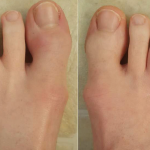NEW YORK (Reuters Health)—Ultrasound-defined tenosynovitis (TS) is a strong predictor of early rheumatoid arthritis (RA), according to new findings presented at the European League Against Rheumatism (EULAR) Annual Congress in Rome.
Patients with TS of the extensor carpi ulnaris (ECU) tendons or the finger flexor tendons were more than six times as likely to be subsequently diagnosed with RA compared to those without TS at those sites, Dr. Andrew Filer of the University of Birmingham in the UK and colleagues found.
US-defined TS at these sites was a more powerful predictor of RA diagnosis than early morning stiffness, symmetrical arthritis or hand joint arthritis.
Dr. Filer presented the results in a press conference at the meeting on June 10.
In 2012, the EULAR Study Group for Risk Factors for RA issued a call for new biomarkers for early prediction of the disease. “There is a wealth of evidence that the clinical signs and symptoms of RA may be preceded by a preclinical phase lasting several years, and this preclinical phase is likely to represent an important therapeutic window within which clinical outcomes can be dramatically improved,” Dr. Filer said in a statement.
To determine if ultrasound-defined TS could be an early biomarker for RA, Dr. Filer and his colleagues performed assessment at 16 tendon regions in 107 patients who had synovitis in at least one joint, and reported having symptoms for three months or less. Eighteen months after assessment, 43 patients had developed RA, 20 had non-RA persistent disease, and 44 had no disease.
At baseline, 86% of the patients who went on to develop RA had TS in at least one tendon compartment, versus 75% of those with non-RA persistent disease and 70% of those whose symptoms resolved.
Tendon involvement distribution was significantly different across the groups. Fifty-four percent of the RA patients had ECU involvement, versus 15% of those with non-RA disease and 18% of those with resolving disease (p<0.001).
The diagnostic odds ratio associated with hand flexor or extensor Power Doppler TS symmetry was 6.32, while it was also 6.32 for wrist extensor PD TS symmetry. ECU TS was associated with 5.54 greater odds of RA, while the diagnostic odds ratio associated with hand extensor TS PD was 4.83.
The strongest RA predictors were rheumatoid factor and anti-cyclic citrullinated peptide (CCP), with diagnostic OR of about 13. Arthritis of three or more joint areas and the presence of early morning stiffness for more than 60 minutes both had a diagnostic OR of 4.96, while the diagnostic ORs for symmetrical arthritis and hand joint arthritis were about 4.5.
“Currently this test can be used to increase physician confidence of a diagnosis of RA in patients with UA and/or symptoms suggestive of RA and a short duration of symptoms,” Dr. Filer told Reuters Health by email. “The presence of ECU or any finger flexor tenosynovitis increases the odds of subsequent RA 6.6-fold in unselected patients regardless of anti-CCP positivity, and 4.8-fold in patients seronegative for anti-CCP.”
“This work is part of a series of studies with the UK Birmingham Early Arthritis Cohort (BEACON) that will ultimately generate weighted algorithms incorporating subclinical joint and tendon disease measured by ultrasound to aid in the clinical diagnosis of RA and other persistent arthritides in early arthritis clinics (see Filer et al Ann Rheum Dis 2011),” Dr. Filer added.
“In the BEACON cohort we recruit patients with arthritis of less than 3 months’ symptom duration, when disease is frequently undifferentiated, but the benefit of treating RA is at its greatest (van der Linden et al Arthritis Rheum 2010): a real diagnostic problem for rheumatologists,” he said. “Previous data on tenosynovitis has focused on MRI, which is not accessible for most clinicians as a modality to aid in determining early treatment.”



